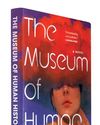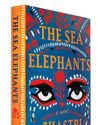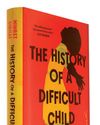
For over a century print publishing in the United States saw a robust equilibrium in which publishers, booksellers, authors, and readers struck a balance that both served their needs and established a fertile environment for a strong tradition of American literature.
But rewind to the mid-nineteenth century and we see a different story: American publishers were building their future empires by pirating British works. Meanwhile Canada was pirating works by writers from the United States (Mark Twain visited Ottawa in 1883, prior to the publication of Life on the Mississippi, to gain copyright in Canada). American writers started to suffer financially because they found it difficult to compete with the royalty-free works from overseas. The storied authors we know today, like Herman Melville and Walt Whitman, paid to have their own books printed.
By the denouement of the nineteenth century, the rambunctious American publishing industry was tamed. The United States Congress entered into the International Copyright Act of 1891, effectively trading American publishers’ ability to pirate for the protection of American authors. Pioneered by George Palmer Putnam in 1846, the modern royalty system, in which authors were paid a fixed percentage of the sales price and publishers and writers thus shared financial risk, finally came into effect.
The tradition of American publishing is an iterative—and sometimes unsavory—experimentation to resolve tensions between writers, legal structures, revenue models, and technological innovation.
To its credit the royalty system survived numerous shifts in formats, including hardcovers, mass-market paperbacks, pulp dime novels, trade paperbacks, audiobooks, and, most recently, e-books. The system worked for publishers and authors as long as individual items—whether physical or digital—were bought by and sold to individual end users.
Bu hikaye Poets & Writers Magazine dergisinin November - December 2019 sayısından alınmıştır.
Start your 7-day Magzter GOLD free trial to access thousands of curated premium stories, and 9,000+ magazines and newspapers.
Already a subscriber ? Giriş Yap
Bu hikaye Poets & Writers Magazine dergisinin November - December 2019 sayısından alınmıştır.
Start your 7-day Magzter GOLD free trial to access thousands of curated premium stories, and 9,000+ magazines and newspapers.
Already a subscriber? Giriş Yap

Literary MagNet
When Greg Marshall began writing the essays that would become his memoir, Leg: The Story of a Limb and the Boy Who Grew From It (Abrams Press, June 2023), he wanted to explore growing up in Utah and what he calls \"the oddball occurrences in my oddball family.\" He says, \"I wanted to call the book Long-Term Side Effects of Accutane and pitch it as Six Feet Under meets The Wonder Years.\" But in 2014 he discovered his diagnosis of cerebral palsy, information his family had withheld from him for nearly thirty years, telling him he had \"tight tendons\" in his leg. This revelation shifted the focus of the project, which became an \"investigation into selfhood, uncovering the untold story of my body,\" says Marshall. Irreverent and playful, Leg reckons with disability, illness, queerness, and the process of understanding our families and ourselves.

THE MEUSEUM OF HUMAN HISTORY
READING The Museum of Human History felt like listening to a great harmonic hum. After I finished it I found the hum lingering in my ears. Its echo continued for days.

The Sea Elephants
SHASTRI Akella's poised, elegant debut, The Sea Elephants, is a bildungsroman of a young man who joins a street theater group in India after fleeing his father's violent disapproval, the death of his twin sisters, and his mother's unfathomable grief.

The History of a Difficult Child
MIHRET Sibhat's debut novel begins with God dumping rain on a small Ethiopian town as though. He were mad at somebody.

The Sorrows of Others
AS I read each story in Ada Zhang’s brilliant collection, The Sorrows of Others, within the first few paragraphs— sometimes the first few sentences— I felt I understood the characters intimately and profoundly, such that every choice they made, no matter how radical, ill-advised, or baffling to those around them, seemed inevitable and true to me.

We Are a Haunting
TYRIEK White’s debut novel, We Are a Haunting, strikes me as both a love letter to New York City and a kind of elegy.

RADICAL ATTENTION
IN HER LATEST BOOK, THE LIGHT ROOM: ON ART AND CARE, PUBLISHED BY RIVERHEAD BOOKS IN JULY, KATE ZAMBRENO CELEBRATES THE ETHICAL WORK OF CAREGIVING, THE SMALL JOYS OF ORDINARY LIFE, AND AN ENGAGEMENT WITH THE NATURAL WORLD WITHIN HUMAN SPACES.

The Fine Print
HOW TO READ YOUR BOOK CONTRACT

First
GINA CHUNG'S SEA CHANGE

Blooming how she must
WITH ROOTS IN NATURE WRITING, ENVIRONMENTAL JUSTICE, POETRY, AND PHOTOGRAPHY, CAMILLE T. DUNGY'S NEW BOOK, SOIL: THE STORY OF A BLACK MOTHER'S GARDEN, DELVES INTO THE PERSONAL AND POLITICAL ACT OF CULTIVATING AND DIVERSIFYING A GARDEN OF HERBS, VEGETABLES, FLOWERS, AND OTHER PLANTS IN THE PREDOMINANTLY WHITE COMMUNITY OF FORT COLLINS, COLORADO.